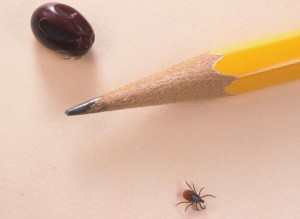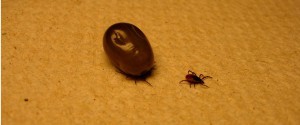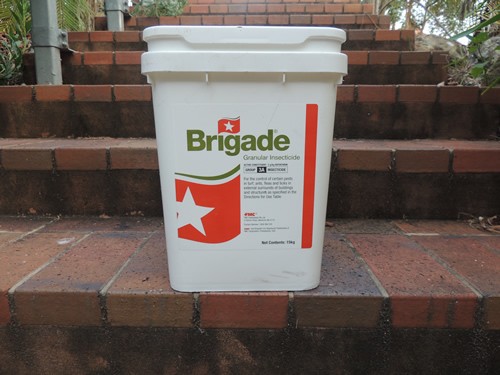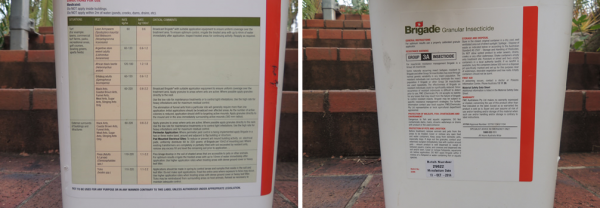Tick Pest Control
Worried About Ticks in Sydney? You Should Be!
“I’m sure you’ve heard about the dangers that accompany ticks. And at A1 Pest Control we share your concern for your family or pets. We’re always keen to get our hands dirty and get rid of your pest problem.” – Bruce

Just recently there has been a lot of commotion about new tick line procedures in QLD as a step in improving bio security in our agriculture industry which just goes to show how big of an issue the ongoing tick problem is in Australia. Ticks are known to be carriers of diseases that can not only affect cattle but people as well. Sydneysiders, especially those living near the northern beaches, know about the Paralysis tick and how it is one of the most dangerous pests to have lurking in your backyard!
It is also the most common and problematic tick in this area (Sydney Northern Beaches). And when you consider their minuscule size, these ticks can certainly pack a punch as doctors and veterinary surgeons can testify. If you live along the east coast of Australia, the chances are you’ve seen a few ticks in your time.
“After experiencing 7 small ticks in a matter of 2 weeks in July we thought the coming tick season is going to be a bad one. We got A1 Pest Control in to spray the garden immediately and we have not seen a tick, on ourselves or our cats, since. After spending thousands last year saving a cat from tick paralysis this service is one of the best around.” Sue Kelly, St Ives
Paralysis ticks live in vegetation and dine on blood – and they’re not too fussy about their ‘host’. And while most people are aware that horses, dogs and cats can be affected by ticks, many don’t realise that children and sometimes even adults may also become seriously ill when a tick latches onto them.

Here are three ways that ticks may cause illness in humans:
•Tick paralysis: when ticks remain on their host a variety of symptoms may develop including weakness in the limbs, headaches, partial paralysis (usually of the face), fever and/or rash, and even flu like symptoms. Children are more susceptible in this regard than adults.
•Allergic reaction: some individuals display an allergic reaction to ticks. In many cases the reaction will be mild however, in some individuals a severe and life threatening allergic reaction – anaphylaxis – may occur quite quickly after exposure and if this occurs, medical attention should be sought as a matter of urgency.
•Tick Typhus: relatively rare, tick typhus is a tick borne disease that may be transmitted from native animals to humans. Treatable with antibiotics, symptoms include headache, rash, fever, flu like symptoms and swollen glands.
They may be small but ticks represent a significant danger to young children and pets, particularly as they’re so tiny and may go unnoticed until symptoms begin to occur. Even then, it may be difficult to locate the tick. Prevention is better than cure so here are two things you can do to minimise the risk of your children or pets being affected by ticks:
•Trim bushy shrubs and minimise foliage around your yard – ticks tend to move onto a host when the host brushes against or walks beneath the foliage the ticks are on.
•Don’t keep shrubby areas too moist – ticks don’t like dry or very hot conditions.

In NSW there’s only one approved product for the eradication of ticks and only licensed pest controllers are allowed to apply it. If ticks are a problem in your area regardless of these measures, it’s time to call in a professional pest control operator to assist with insecticidal control of ticks and help you to keep your kids and your pets a little safer.
Brigade, an Agserv product, is currently the only product approved for tick treatments and tick control. As a bonus it’s also effective against other garden insects such as fleas. Not all pest contorl agencies use Brigade so make sure to book in with one that does, it’s been tested and proved to be an effective and long lasting tick treatment. We have always used Brigade and never get complaints about the treatment!
Tick poisoning.
The tick becomes attached to its host by inserting its sharp mouthpartas, which bear backward-projecting barbs, ensuring that it is held in place during feeding. At the same time, a material is injected from the salivary glands of the tick, and this prevents the coagulation of blood, which would cause the fine mouthparts to become clogged. It is this anticoagulant, and perhaps other materials, that is toxic to animals. Fatal paralysis in mice has been produced experimentally by injecting them with fluid from the salivary glands of ticks. The tick does not burrow into the skin; but because there is localised reaction to the presence of the tick which causes swelling of the skin, the tick appears to be embedded deeply. Once a tick bite has been detected, it should be treated immediately.
Symptoms and treatment of tick bites.
The following symptoms start to appear about 3-7 days after the tick has attached itself to an animal:
1 Loss of appetite, lassitude and depression occur.
2. Discharge from the eye may be present.
3. Paralysis is first evident in the hindlimbs, when the animal finds difficulty in walking and co-ordinating its movements.
4. Vomiting may be evident, followed by grunting and wheezing.
5. Paralysis extends to the forequarters, with accompanying difficulty in swallowing and breathing.
6. Eyes show distress, and the pupils become dilated.
7. Death may be caused by respiratory failure brought about by paralysis of the throat region, or heart failure may occur.
Any animal that has picked up a tick should be referred to a veterinary surgeon as soon as possible, even after the tick has been located. The tick should be removed, and this may be done by grasping the tick head area with the finger and thumb nails (or fine forceps if available) and snapping it sideways and then withdrawing it. Do not use kerosene, and do not squeeze the tick’s body. After the tick has been removed, the site may be washed with a mild antiseptic. If the animal cannot be taken to a vet, seek the vet’s guidance by phone.
Control of Ticks.
The number of ticks in an area may be reduced and the hazard minimised by several means:
1. Exclusion of bandicoots. These are protected animals and must not be killed. However, if they are trapped and released elswhere, the problem is reduced. If bandicoot activity is noticed by their diggings in lawn areas, they are seeking curl grubs and other lawn pests, so eradication of the grubs means the bandicoots are no longer attracted so close to where pets have access.
2. Removal of excess vegetation, particularly above grass height, and elimination of moist areas.
3. Chemical spraying of foliage and areas suspected of harbouring ticks, using registered products. Read the label for acceptance in problem areas.
4. Washing the animal in a recommended and approved pesticide. Information appears on the label of suitable pesticide containers. Dusts also have some value.
5. Searching animals at least every second day. This is the most satisfactory procedure. Pesticides, although effective for a time, are likely to give animal owners a sense of false security that the tick have all been killed or repelled. Any small ticks found may be removed as described previously. Fully engorged ticks must be removed carefully, preferably with forceps.
Some general details about ticks.
Paralysis in animals – The adult tick is the most dangerous stage in the life cycle of the tick, although younger stages may cause paralysis when present in large numbers.
Veterinary treatment – The advantages of seeking advice from a veterinary surgeon are stressed. The vet is able to administer tick serum and either minimise or prevent distressing vomiting. When a tick is removed, the peak symptoms may not be evident until some time later.
Tick serum – The serum is produced by allowing large numbers of ticks to feed on laboratory-held animals. Some animals do not produce this serum.
Susceptibility – Bandicoots, kangaroos and wallabies appear to be susceptible until they acquire immunity, probably by exposure to repeated attacks from the immature stages of the tick.
Recovery – Recovery appears to be higher in cats and goats than in dogs. Animals do recover from tick poisoning with proper treatment.
Immunity – After an infestation from ticks, an animal that has recovered usually retains immunity for about 3-4 weeks, particularly if serum has been administered. Ticks must repeatedly feed on animal for immunity to be retained.
Location of ticks – Ticks are found mostly on the forequarters, especially the head and neck region. Some difficult, yet faoured, areas for attachment are the mouth, ears eye surrounds, base of tail and anus. The animal can usually remove them itself from other parts of its body.
Seasonal abundance – Ticks are usually more abundant in the November-December period, but weather conditions play an important role. Although numbers decline in winter, animal inspection must not be neglected at this time.
Tick dispersal – Tick may be transferred from vegetation on such things as clothing and oicnic rugs, as well as animal fur. Ticks do not jump; they merly adhere to the body or legs of a passing animal.
So how do you get rid of ticks? Call A1 Pest Control on 0417 251 911 today for some free advice and no pushy sales talk
Call Bruce on 0417 251 911 if you have a tick problem or send him a message




